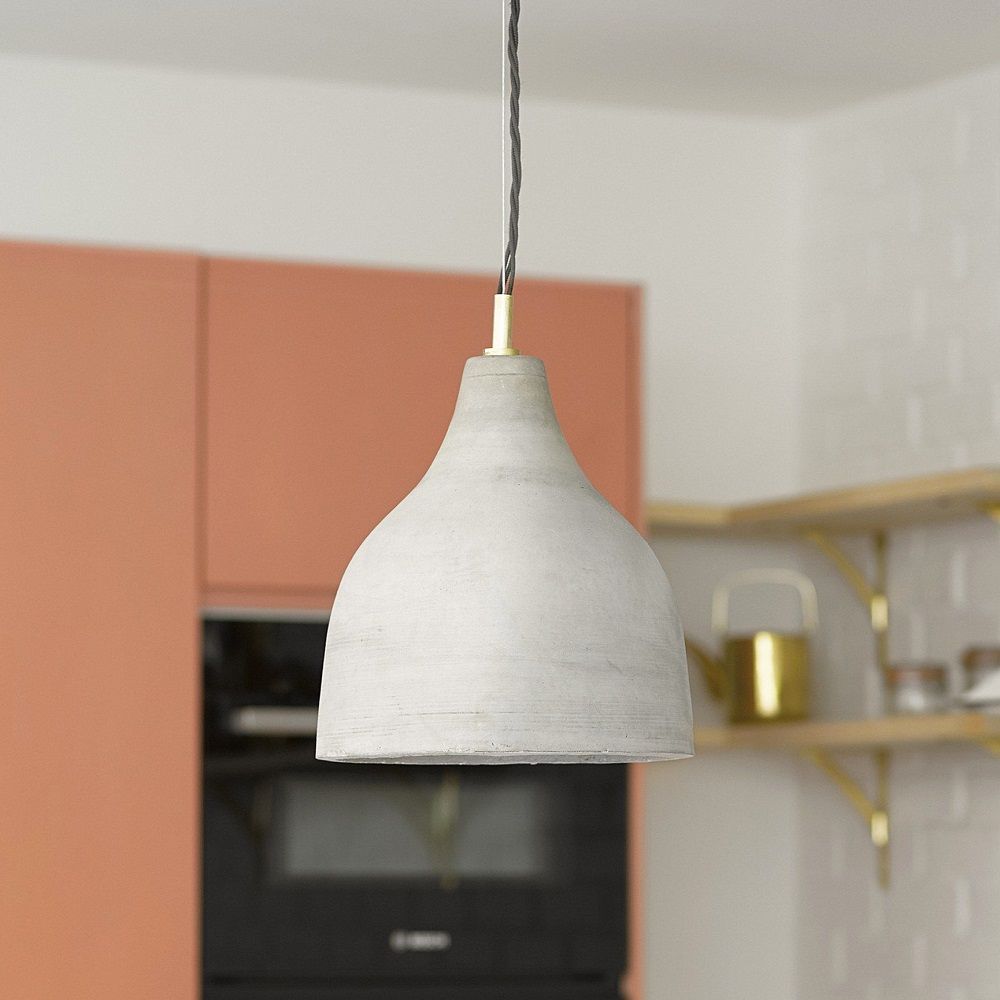
Concrete is a brilliant, versatile material for pendant lights and much more. Here’s a guide to bringing stylish concrete into your home...
The days when concrete used to get a bad rap for being ugly or ‘brutal’* are long gone. It’s now accepted that concrete is a brilliant, even a beautiful material that can work brilliantly in the home. Concrete has a lot going for it. It’s practical: durable, long-lasting, you can’t easily scratch it or break it and it’s very easy to keep clean (a quick wash with a non-abrasive cleaner is fine). It’s also very affordable (not many such hardwearing materials are so cheap). It’s incredibly versatile - you can pour it and fashion it into almost any shape and size, from lampshades to baths to multi-storey car parks. And concrete is also versatile when it comes to appearance – you can polish it to a beautiful, marble-like shine or leave it rough and untreated to give a scheme a bit of an urban edge.

Using concrete for texture
Another really important feature of concrete from an interior design point of view is that it creates texture, the sense that something ‘looks like it feels’. That relationship between the tactile and the visual is a key weapon in the interior designer’s armoury: it’s why they are so concerned with materials as well as colours. And just as designers always think about contrasting colours, so they also love to contrast textures. Concrete has a unique texture – we all know the feel of running our fingers over a rough concrete wall. But we don’t usually associate it with interiors, and that means that concrete is great for interesting, striking texture contrasts. For example, you can place soft rugs and fabrics against hard concrete floors, and they suddenly seem more noticeably soft and tactile. Or you can contrast the industrial, artificial feel of concrete with wood and other natural materials and they’ll seem all the more ‘organic’ and fragile.The Soprano concrete pendant light
In the case of our Soprano concrete pendant light, its rough, raw feel makes for a brilliant texture contrast with the smooth surfaces, metals and plastics in a kitchen, drawing attention and making it a real statement piece. The Soprano comes in a pale grey colour and in two sizes: a larger version with a 28cm height and 25cm diameter, and a smaller with an 18cm height and 15cm diameter. They work brilliantly on their own or hung in rows over an island.
More ways to bring concrete into your home
 Image credit: Contemporary Concrete Floors
Image credit: Contemporary Concrete Floors
- Polished floors – not a cheap option, but can look stunning. Browse some on Pinterest here.
- Bathrooms and kitchens – units, baths and sinks and much more. Gawp at Pinterest here
- Furniture – coffee tables can work very well – and check out these concrete storage cubes from RAFT.
- Plant pots – Raft also do a really nice range of concrete planters. The texture contrast of manmade concrete with greenery is a really striking one.

Shop our concrete pendant lights here and browse all of Pooky’s designer pendants lights here. *Did you know that the term ‘brutalist’ to describe all those 1950s concrete car parks and tower blocks doesn’t come from the word ‘brutal’, but from ‘Béton brut’ – the French for ‘raw concrete’?













